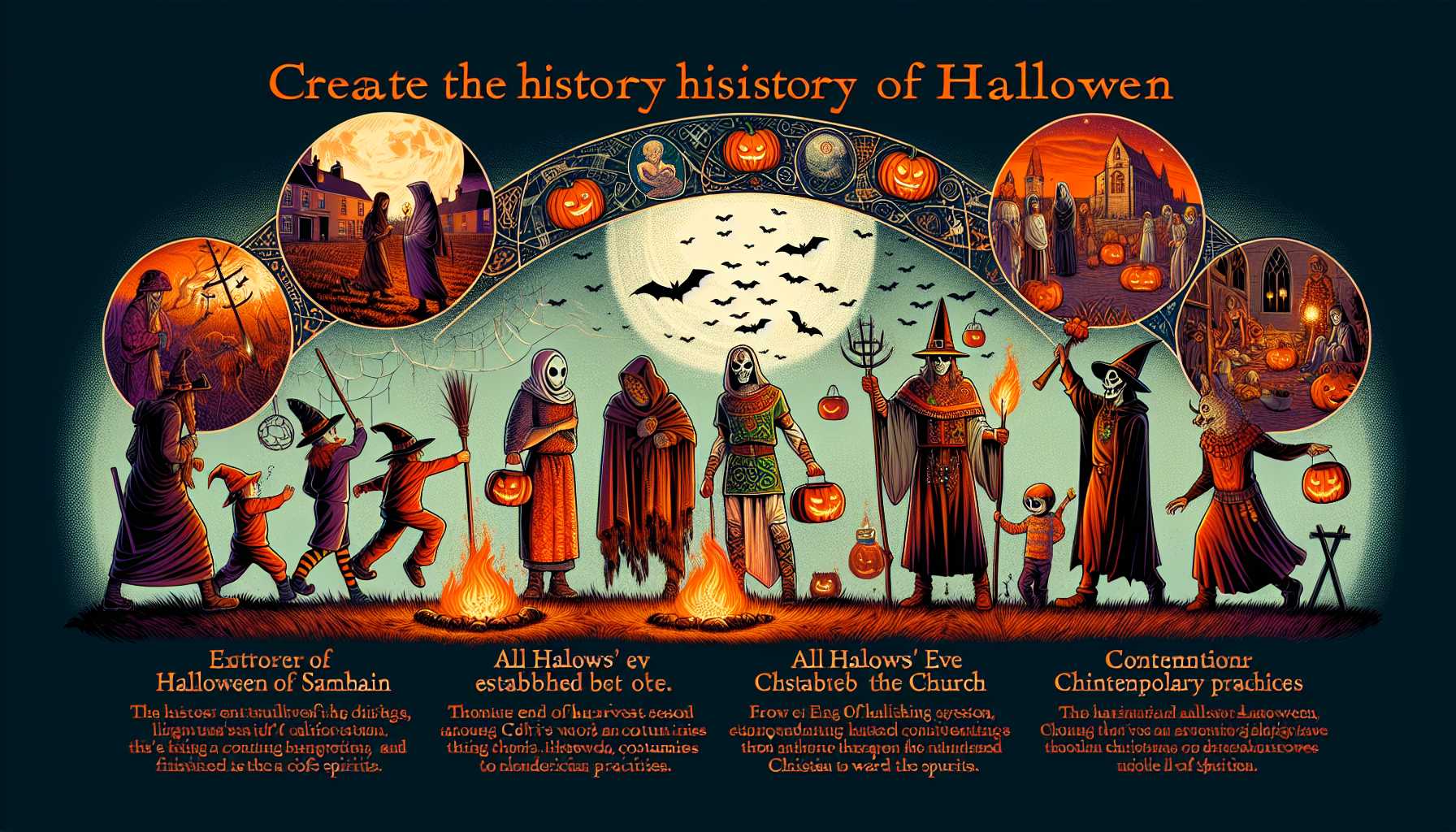
The Evolution of Halloween From Ancient Samhain to Modern Celebration
The article on the history of Halloween outlines the holiday's origins, tracing it back to the ancient Celtic festival of Samhain, celebrated around November 1st.
Harouin no rekishi ni kansuru kiji wa, shukujitsu no kigen o setsumei shi, 11-gatsu 1-nichi goro ni iwawareru kodai keruto no matsuri Sawin ni sakanoborimasu.
ハロウィンの歴史に関する記事は、祝日の起源を説明し、11月1日頃に祝われる古代ケルトの祭りサウィンに遡ります。
Samhain marked the end of the harvest season and the onset of winter, a time believed to blur the line between the living and the dead.
Sawin wa shūkaku no owari to fuyu no tōrai o shimeshi, seisha to shisha no kyōkai ga aimai ni naru to shinjirarete ita jiki desu.
サウィンは収穫の終わりと冬の到来を示し、生者と死者の境界が曖昧になると信じられていた時期です。
Celts lit bonfires and wore costumes to ward off roaming spirits, as they believed the souls of the deceased returned on this night.
Kerutojin wa, tayō suru rei o oiharau tame ni takibi o tomoshi, ishou o kite imashita. Karera wa kono ban ni shisha no tamashii ga modoru to shinjite imashita.
ケルト人は、漂う霊を追い払うために焚き火を灯し、衣装を着ていました。彼らはこの晩に死者の魂が戻ると信じていました。
With the spread of Christianity, the church established All Hallows' Eve on October 31st, the night before All Saints' Day, to replace pagan customs with Christian practices.
Kirisuto kyō no hirogari to tomo ni, kyōkai wa 10-gatsu 31-nichi ni bansen-sai no zen'ya de aru Ōru Harōzu Ibu o seitei shi, ikyō no fūshū o Kirisuto kyō no kanshū ni okikaemashita.
キリスト教の広がりと共に、教会は10月31日に万聖節の前夜であるオールハローズイブを制定し、異教の風習をキリスト教の慣習に置き換えました。
Over centuries, this celebration evolved into what we now know as Halloween, incorporating various cultural elements.
Nan seiki ni mo watatte, kono shukusai wa samazama na bunka-teki yōso o toriire nagara, genzai watashitachi ga shitte iru Harouin e to shinka shimashita.
何世紀にもわたって、この祝祭は様々な文化的要素を取り入れながら、現在私たちが知っているハロウィンへと進化しました。
By the 19th century, Irish immigrants brought the tradition to America, where it became increasingly popular and commercialized.
19-seiki made ni wa, Airurando no imin ga sono dentō o Amerika ni mochikomi, shidai ni ninki ga takamari shōgyōka saremashita.
19世紀までには、アイルランドの移民がその伝統をアメリカに持ち込み、次第に人気が高まり商業化されました。
Today, Halloween is characterized by costumes, trick-or-treating, and festive decorations, diverging from its somber origins to a more playful and community-centered celebration.
Kyō no Harouin wa ishou, Torikku Oa Torīto, soshite shukusai no sōshoku ga tokuchō de, genshuku na kigen kara yori asobigokoro ni michita komyuniti chūshin no shukusai e to ikō shiteimasu.
今日のハロウィンは衣装、トリック・オア・トリート、そして祝祭の装飾が特徴で、厳粛な起源からより遊び心に満ちたコミュニティ中心の祝祭へと移行しています。
The article emphasizes the transformation of Halloween through cultural exchanges and its evolution into a widely celebrated holiday that combines elements of ancient rituals and modern festivities.
Kono kiji wa, bunka kōryū o tsūjita Harouin no henka to, kodai no gishiki to gendai no matsuri no yōso o yūgō saseta hiroku iwawareru shukujitsu ni shinka shita koto o kyōchō shiteimasu.
この記事は、文化交流を通じたハロウィンの変革と、古代の儀式と現代の祭りの要素を融合させた広く祝われる祝日に進化したことを強調しています。
Based on this article
